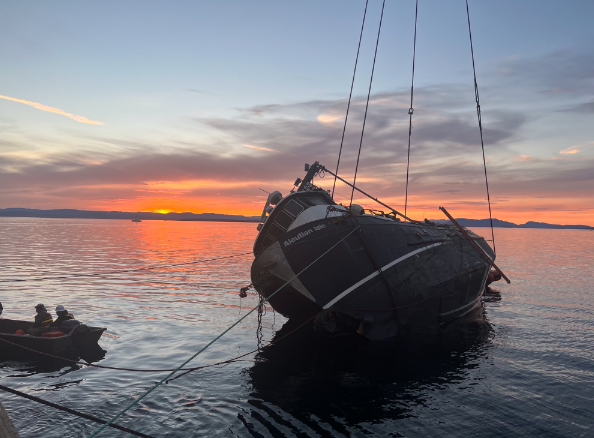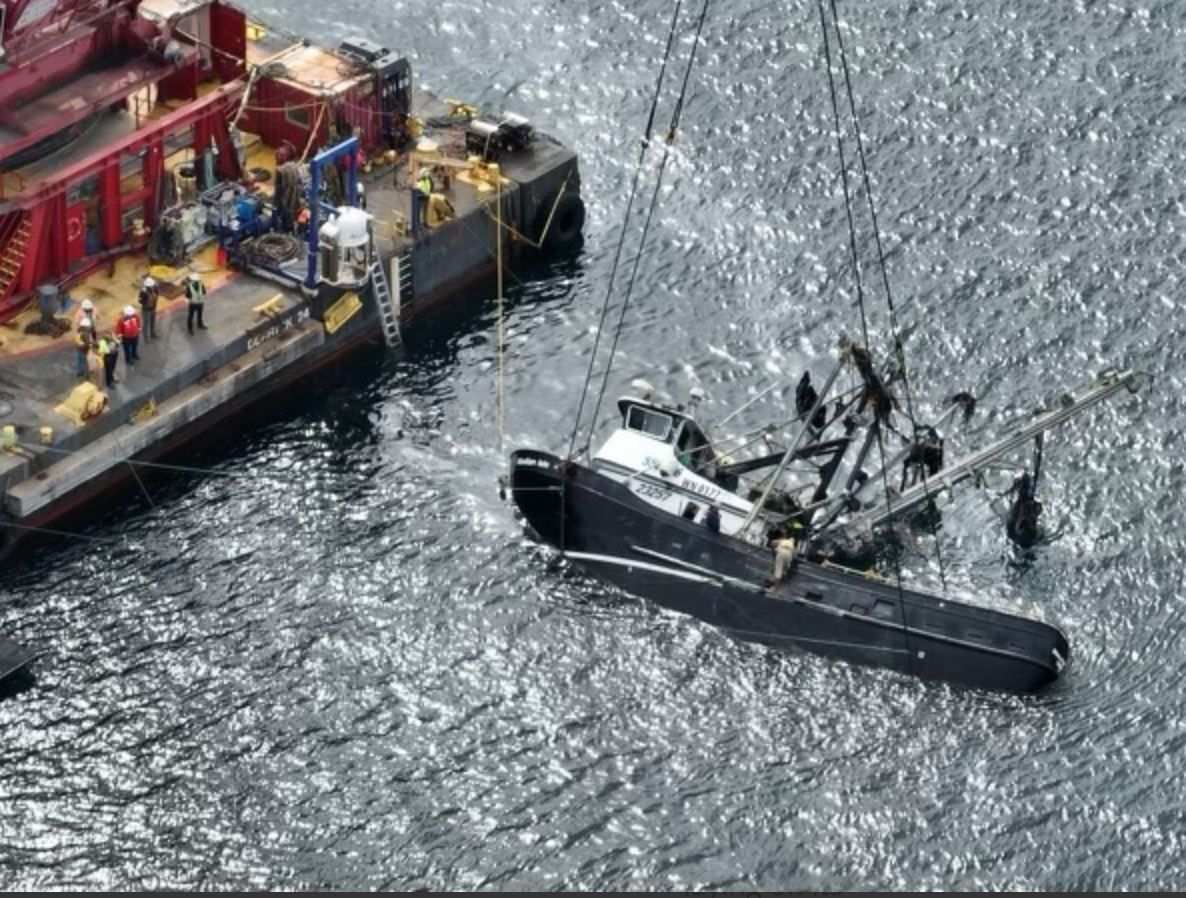The fishing vessel Aleutian Isle was successfully raised Saturday, more than a month after it sank near Washington’s San Juan Island. But a complex recovery effort continued to secure the boat and reduce its pollution risk, according to the Coast Guard.
The 49-foot vessel took on water around 2 p.m. Aug. 13, and its five crew members were taken off by a nearby vessel. With the boat’s crew accounted for, Coast Guard units including the cutter Swordfish and aircraft shifted into a pollution response effort.
The Aleutian Isle was carrying an estimated 2,500 gallons of diesel fuel and 100 gallons of hydraulic fluid when it went down near Sunset Point on the west side of San Juan Island, in about 200 feet of water.
The scene has been intensely monitored by the Coast Guard, Washington Department of Ecology, and local partners including conservation groups. The danger of a spill is of particular concern for potential effects on the highly endangered Puget Sound Southern Regional killer whale population.
“After surfacing, crews began the complicated task of dewatering and removing fuel,” according to a Coast Guard account of the operations. “Crews partially dewatered the vessel and removed approximately 775 gallons of oily-water mixture where it currently rests floating with assistance from the barge DB-24.”
“Crews were unable to safely access all spaces and completely dewater the vessel. Consequently, the vessel’s weight exceeded the safe workload for the existing recovery plan. The unified command is reevaluating the best path forward,” the Coast Guard stated.
“Raising the vessel to the surface is certainly a success, but the complexity of this operation continues to challenge our team,” said Coast Guard Cmdr. Kira Moody, the incident commander.
“Lifting the boat was a critical first step to minimize the ongoing pollution risk. The next step will likely involve relocating the crane barge to a more sheltered location where we can fully secure the boat with far less risk to our divers and crew and better protect the environment from any lingering pollution risk,” Moody said.
Earlier plans to keep lifting the vessel would jeopardize the safety of crews who need access to the starboard side fuel tanks and internal spaces to continue dewatering and removing fuel to lessen the vessel’s weight, according to the Coast Guard and state Department of Ecology.
The crane in use has the lifting capacity, but the existing configuration of the rigging at the surface would put too much stress on the vessel’s structure, “which could cause it to break and likely release remaining fuel onboard,” according to the Coast Guard.
While the lifting operation was postponed, pollution mitigation strategies continued. Some sheening that appeared as the vessel came to the surface was boomed for containment.
Wildlife and pollution mitigation teams kept birds away from the sheening during lift operations. They are continuing to monitor sheening, the location of marine mammals, birds and impacts to shorelines.
A safety zone of 1,000 yards remains in place around the operations.








